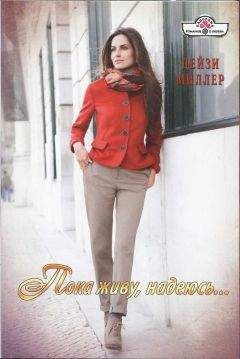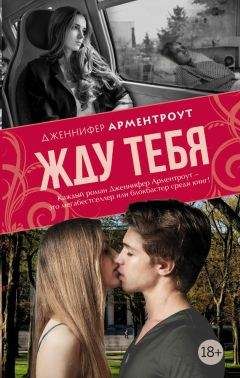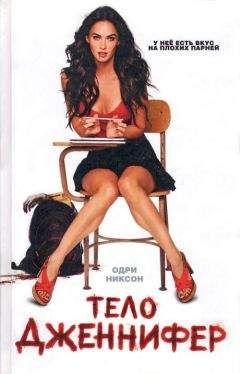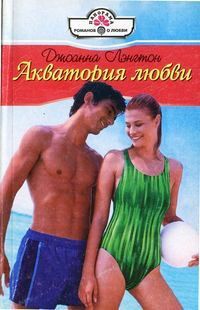Ричард Овери - Сталин и Гитлер
97. Orlow, History of the Nazi Party: I, pp. 52–3.
98. Hess, Rudolf Hess: Briefe, p. 363, letter from Hess to Klara and Fritz Hess, 2 March 1925. Speech in C. Vollnhals (ed.) Hitler: Reden, Schriften und Anordnungen Februar 1925 bis Januar 1933 (12 vols, Munich, 1992), i, p. 14–28.
99. P. Stachura Gregor Strasser and the Rise of Nazism (London, 1983), pp. 11–26; U. Kissenkoetter Gregor Strasser und die NSDAP (Stuttgart, 1978), pp. 22–5.
100. Stachura, Strasser, p. 38.
101. Hess, Rudolf Hess: Briefe, p. 368, letter from Hess to Klara and Fritz Hess, 24 April 1925.
102. Orlow, History of the Nazi Party: I, pp. 68–70; I. Kershaw Hitler: Hubris 1889–1936 (London, 1998), pp. 274–7.
103. Stachura, Strasser, p. 51; see too Kissenkoetter, Gregor Strasser, p. 24.
104. Stachura, Strasser, pp. 51–3; see on Hitler’s economic views R. Zitelmann Hitler: The Politics of Seduction (London, 1999), esp. part iv, pp. 198–269.
105. Orlow, History of the Nazi Party: I, pp. 135–6, 143.
106. P. Longerich Die braunen Bataillone: Geschichte der SA (Munich, 1989), pp. 15–33; Orlow, History of the Nazi Party: I, pp. 211–13.
107. K. Gossweiler Die Strasser-Legende (Berlin, 1994), p. 19; Kissenkoetter, Gregor Strasser, pp. 41–7.
108. C. Fischer Stormtroopers: a Social, Economic and Ideological Analysis 1929–1935 (London, 1983) pp. 5–6; H. A. Turner (ed.) Hitler: Memoirs of a Confi dant (New Haven, Conn. 1985), pp. 28–31.
109. Stachura, Strasser, p. 101.
110. Stachura, Strasser, pp. 101–13; Kissenkoetter, Gregor Strasser, pp. 123–30, 162–77.
111. Avtorkhanov, Stalin and the Communist Party, p. 124.
112. S. Cohen Rethinking the Soviet Experience: Politics and History since 1917 (Oxford, 1985), ch. 3. See the discussion in S. Blank ‘Soviet Institutional Development during NEP: A Prelude to Stalinism’, Russian History, 9 (1982), pp. 325–46; Daniels, Conscience of the Revolution, pp. 398–401, 408–11; S. Farber Before Stalinism: the Rise and Fall of Soviet Democracy (Cambridge, 1990) pp. 149 ff. on the absence of any independent political activity long before Stalinism.
113. Stachura, Strasser, p. 124; Medvedev, Nikolai Bukharin, p. 161.
114. Stalin, Works, vol. xiii, p. 41, speech to First Ail-Union Conference of Leading Personnel of Socialist Industry, 4 February 1931.
115. Stalin, Works, vol. xiii, p. 42.
116. H. Kuromiya Stalin’s Industrial Revolution: Politics and Workers, 1928–1932 (Cambridge, 1988), p. 5.
117. Kuromiya, Stalin’s Industrial Revolution, p. 17; J. Hughes ‘Capturing the Russian Peasantry: Stalinist Grain Procurement Policy and the “Urals-Siberian” Method’, Slavic Review, 53 (1994), pp. 77–8. See too J. Hughes Stalin, Siberia and the crisis of the New Economic Policy (Cambridge, 1991), esp. chs 5–6.
118. Hughes, ‘Capturing the Peasantry’, p. 87; J. Hughes ‘Re-evaluating Stalin’s Peasant Policy 1928–30’ in J. Pallot (ed.) Transforming Peasants: Society, State and the Peasantry 1861–1930 (London, 1998), pp. 242–50, 255–6.
119. Hughes, ‘Capturing the Peasantry’, pp. 80–81; M. Lewin Russian Peasants and Soviet Power: a Study of Collectivization (New York, 1975) chs 16–17.
120. R. C. Nation Black Earth, Red Star: A History of Soviet Security Policy 1917–1991 (Ithaca, NY, 1992), p. 61; Kuromiya, Stalin’s Industrial Revolution, p. 15; on the fate of bourgeois experts see N. Jasny Soviet Economists of the Twenties (Cambridge, 1972), pp. 119, 127, 144.
121. R. W. Davies, M. Harrison and S. G. Wheatcroft (eds) The Economic Transformation of the Soviet Union 1913–1945 (Cambridge, 1994), pp. 113–14, 290.
122. L. Viola Peasant Rebels under Stalin: Collectivization and the Culture of Peasant Resistance (Oxford, 1996), pp. 105, 139–40; see too T. Macdonald ‘A Peasant Rebellion in Stalin’s Russia’ in L. Viola (ed.) Contending with Stalinism: Soviet Power and Popular Resistance in the 1930s (Ithaca, NY, 2002), pp. 84–108.
123. Viola, Peasant Rebels, pp. 171–2.
124. Davies, Harrison and Wheatcroft, Economic Transformation, p. 68.
125. R. W. Davies, O. V. Khlevniuk, E. A. Rees, L. P. Kosheleva and L. A. Rogovaya (eds) The Stalin-Kaganovich Correspondence
1931–1936 (New Haven, Conn. 2003) pp. 180–81, letter from Stalin to Kaganovich, 11 August 1932. On the famine see S. G. Wheatcroft ‘More Light on the Scale of Repression and Excess Mortality in the Soviet Union in the 1930s’ in J. A. Getty and R. Manning (eds) Stalinist Terror: New Perspectives (Cambridge, 1993) pp. 278–89. Extrapolations from the demographic data suggest excess mortality of 4–5 million in total attributable to famine and its effects.
126. J. Rossman ‘A Workers’ Strike in Stalin’s Russia’ in Viola (ed.), Contending with Stalinism, pp. 45–6; J. Haslam ‘Political Opposition to Stalin and the Origins of the Terror in Russia, 1932–1936’, The Historical Journal, 29 (1986), pp. 396–9; B. Starkov ‘Trotsky and Ryutin: from the history of the anti-Stalin resistance in the 1930s’ in T. Brotherstone and P. Dukes (eds) The Trotsky Reappraisal (Edinburgh, 1992), pp. 71–3.
127. Kuromiya, Stalin’s Industrial Revolution, p. 21.
128. R. G. Suny ‘Stalin and his Stalinism’, in I. Kershaw and M. Lewin (eds) Stalinism and Nazism: Dictatorships in Comparison (Cambridge, 1997), pp. 46–7.
129. Lewin, Russian Peasants, p. 448.
130. R. Gaucher Opposition in the USSR, 1917–1967 (New York, 1969), p. 270.
131. The standard work is H. James The German Slump: Politics and Economics 1924–1936 (Oxford, 1986); see too J. von Krüdener (ed.) Economic Crisis and Political Collapse: the Weimar Republic 1924–1933 (Oxford, 1990).
132. S. Haffner Defying Hitler: a Memoir (London, 2002), p. 68.
133. D. Schumann Politisches Gewalt in der Weimarer Republik 1919–1933 (Essen, 2000), pp. 320, 335–7.
134. Zitelmann, Hitler, pp. 33–53, 62–75. ‘Our Party,’ Hitler announced in a speech in 1920, ‘must have a revolutionary character’; or in 1921, The salvation of Germany can only come… through revolution’ (p. 62).
135. T. Abel Why Hitler Came into Power: an Answer Based on the Original Life Stories of Six Hundred of his Followers (New York, 1938), p. 93.
136. Haffner, Defying Hitler, p. 71.
137. Stachura, Strasser, p. 76.
138. See P. Fritzsche Germans into Nazis (Cambridge, Mass., 1998), pp. 209ff. In general see C. Fischer The Rise of the Nazis (Manchester, 2002); M. Broszat Hitler and the Collapse of Weimar Germany (Leamington Spa, 1987); H. A. Turner Hitler’s Thirty Days to Power: January 1933 (London, 1996).
139. Avtorkhanov, Stalin and the Communist Party, pp. 1–2.
140. J. Biesemann Das Ermächtigungsgesetz als Grundlage der Gesetzgebung im nationalsozialistischen Staat (Münster, 1985), pp. 279–82.
141. Stalin, Works, vol. xiii, p. 354.
142. Volkogonov, Stalin: Triumph and Tragedy, p. 198.
143. J. Toland Adolf Hitler (New York, 1976), p. 361; H. Burden The Nuremberg Party Rallies: 1923–39 (London, 1967), pp. 76, 80–81.
144. Longerich, Die braunen Bataillone, p. 184. By mid-1934 the SA numbered 4.5 million. On the background see K. Heiden The Führer (New York, 1944), pp. 570–82; Kershaw, Hitler: Hubris, pp. 500–507.
145. Kershaw, Hitler: Hubris, p. 517.
146. Details in H.-G. Seraphim (ed.) Das politische Tagebuch Alfred Roenbergs aus den Jahren 1934/35 und 1939/40 (Göttingen, 1956), pp. 33–5.
147. M. Domarus Hitler: Reden und Proklamationen 1932–1945: Band I Triumph (Munich, 1965), p. 405.
148. Domarus, Hitler: Reden, p. 406.
149. Domarus, Hitler: Reden, pp. 424–5.
150. A. Knight Who Killed Kirov? The Kremlin’s Greatest Mystery (New York, 1999), p. 115.
151. Knight, Who Killed Kirov? pp. 172–4; Volkogonov, Stalin: Triumph and Tragedy, p. 200.
152. Knight, Who Killed Kirov? pp. 169–70; Volkogonov, Stalin: Triumph and Tragedy, pp. 205–6.
153. Knight, Who Killed Kirov? p. 183.
154. Knight, Who Killed Kirov? pp. 197–8; Getty and Manning, Stalinist Terror, pp. 45–9; M. Lenoe ‘Did Stalin Kill Kirov and Does it Matter?’, Journal of Modern History, 74 (2002), pp. 352–80.
155. On the ‘Lex Kirov’ Volkogonov, Stalin: Triumph and Tragedy, p. 208.
156. V. M. Berezhkov At Stalin’s Side (New York, 1994), p. 10.
Глава 2
1. D. Beetham Max Weber and the Theory of Modern Politics (London, 1974), p. 236.
2. A. Avtorkhanov The Communist Party Apparatus (Chicago, 1966), p. 52.
3. V. Garros, N. Korenevskaya and T. Lahusen (eds) Intimacy and Terror: Soviet Diaries of the 1930s (New York, 1995), pp. 205–6, diary of Galina Shtange, 12 December 1937, p. 357, diary of Lyubov Shaporina, 12 December 1937.
4. Garros et al., Intimacy and Terror, p. 206.
5. Garros et al., Intimacy and Terror, p. 357.
6. S. Labin Stalin’s Russia (London, 1949), p. 34.
7. L. Siegelbaum and A. Sokolov (eds) Stalinism as a Way of Life (New Haven, Conn., 2000), pp. 159–63; K.Petrone Life Has Become More Joyous, Comrades: Celebrations in the Time of Stalin (Bloomington, Ind., 2000), p. 175.
8. S. Davies Popular Opinion in Stalin’s Russia: Terror, Propaganda and Dissent 1934–1941 (Cambridge, 1997), pp. 102–12.
9. Davies, Popular Opinion, p. 112.
10. P. Hubert Uniformierter Reichstag: Die Geschichte der Pseudo-Volksvertretung 1933–1945 (Düsseldorf, 1992), pp. 88, 265; R. Gellateley Backing Hitler: Consent and Coercion in Nazi Germany (Oxford, 2001), pp. 15–16.
11. Hubert, Uniformierter Reichstag, p. 281.
12. Hubert, Uniformierter Reichstag, pp. 249–51, 274; IWM, FO 645, Box 156, testimony of Albert Göring, 25 September 1945, for details on voting ‘no’.
13. Hubert, Uniformierter Reichstag, p. 237.
14. J. Stalin Problems of Leninism (Moscow, 1947), p. 557, ‘On the Draft Constitution of the U.S.S.R.’, speech of 25 November 1936.
15. Ibid.
16. H. von Kotze and H. Krausnick (eds) ‘Es spricht der Führer’: 7 exemplarische Hitler-Reden (Gütersloh, 1966), p. 142, speech by Hitler to party district leaders, 29 April 1937.
17. Stalin, Problems, pp. 550–51; see too G. B. Carson Electoral Practices in the USSR (New York, 1955), pp. 50–52.
18. Hubert, Uniformierter Reichstag, pp. 61, 87; Kotze and Krausnick, ‘Es spricht der Führer’, p. 120.
19. Kotze and Krausnick, ‘Es spricht der Führer’, p. 140.
20. G. Neesse Die NSDAP: Versuch einer Rechtsdeutung (Stuttgart, 1935), pp. 143–5; Hubert, Uniformierter Reichstag, p. 240.
21. H. Rauschning Hitler Speaks (London, 1939), p. 199. Hitler told Rauschning that ‘there is no such thing as unlimited power… Even the most extreme autocrat is compelled to correct his absolute will by existing conditions.’
22. A. L. Unger Constitutional Development in the USSR: a Guide to Soviet Constitutions (London, 1981), pp. 50–52, 59–72.
23. The Constitution of the USSR. (Moscow, 1937), pp. 7–9.
24. Hubert, Uniformierter Reichstag, pp. 59–61; J. Biesemann Das Ermächtigungsgesetz als Grundlage der Gesetzgebung im nationalsozialistischen Staat (Münster, 1985), pp. 51–4, 381–2. On Hitler’s ideas of an advisory senate, Mein Kampf, vol. ii, pp. 501–2.




